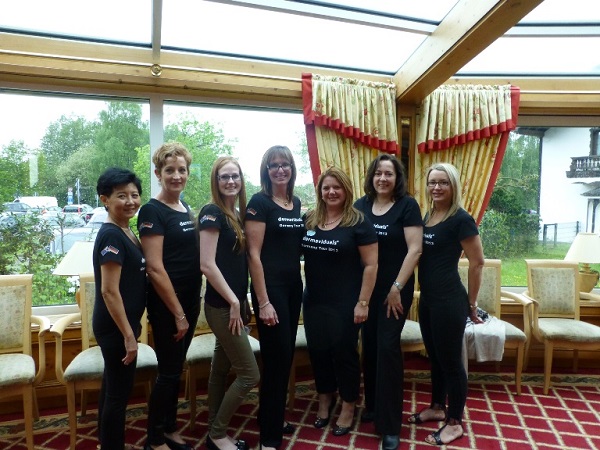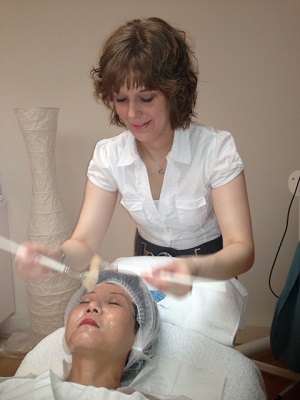Overview of the Second International Symposium on Corneotherapy, presented by Reika Roberts of Derma Aesthetics.

On a beautiful spring day near Dusseldorf, over 70 delegates from around the world attended the Second International Symposium on Corneotherapy. Chief scientist, Dr Hans Lautenschläger, Ph.D, welcomed attendees and began his presentation with an outline of the principles of corneotherapy, commenting that it was still considered a new field of dermatological activity – bordering between dermatology and skincare.
He believes Professor Kligman, the founder of corneotherapy, would certainly appreciate its rapid development and the worldwide adoption of this cutting-edge form of science and its understanding of the complex actions of the bilayers of the skin. He also spoke about the long‑term application of corneotherapic principles, which is in stark contrast to the short-lived trends we frequently experience in the world of cosmetics.
Elena Hernandes, Ph.D, from Russia then gave her presentation. Her main fields of interest are corneobiology and corneotherapy. She refers to this as a revolution in dermatology and the evolution of what we now know about the stratum corneum in understanding the skin barrier function. She spoke about the importance of the stratum corneum and barrier defence systems and how maintaining the integrity of the stratum corneum and supporting its barrier function is the foundation of modern skin care. She touched on the exhaustive research undertaken regarding the structure and function of the stratum corneum, which led to the establishment and growing acceptance of corneotherapy as the preferred method of anti-ageing skin treatments and an effective prophyaxis of skin disorders worldwide.
The next speaker was Professor Cornelia Keck, from the University of Applied Sciences, Germany. She provided fascinating insight into lamellar systems and what makes DMS, liposomes and nanoparticles made of Phosphatidycholine so important for corneotherapy. Where the cell membrane is identical to the physiological substance applied, the skin cells are able to perform their every day job in optimal conditions. She spoke about the fact that we don’t need to destroy the stratum corneum – we just need to open a window for transdermal delivery, creating a signal for our skincare. Lamellar systems make this possible in modern cosmetology.
The following speaker, Dr Jasna Lipozenicic, Prof. Ph.D. M.D., explained why corneotherapy is an important modality in modern dermatology especially as it applies to the treatment of atopic dermatitis. She said dry skin is the result of an impaired hydro lipid protective skin layer, leading to increased water loss. The correlation to corneotherapy became evident – if the stratum corneum is not protected and fed, it will become leaky and permeable, and inflammation and skin problems will result. Preventative corneotherapy, therefore, is a way of caring for the skin into the future.
After a delicious lunch featuring German specialties such as schnitzel and cold meats, internationally acclaimed educator Florence Barrett-Hill took to the stage and provided a detailed explanation of her Pastiche Method of skin analysis. As always, she was informative and inspirational. Accurate skin analysis is the foundation of a skin treatment therapy business; it is on this foundation that success, image and professional credibility are built. In particular, by understanding the lifecycle of the keratinocyte, and its supporting cells and systems of the epidermis and dermis, the true essence of corneotherapy can be applied.
Finally, Dr Hans Lautenschlaeger returned to the stage and gave a lecture on the appreciation and limitations of lamellar dermatological systems. It was a fascinating and inspirational day, drawing together experts from all the different fields of corneotherapy from physics, dermatology, treatments and chemistry, who provided keen insight into these forms of advanced science.
Day two opened with Dr Lance Setterfield. M.D., Canada, discussing the compatibility of skin needling with corneotherapy. To the uninformed, rolling the epidermis may seem contrary to the underlying principles of corneotherapy. However needling enhances absorption of products containing active ingredients to support cell function, while care is taken to avoid inactive ingredients such as fragrance and preservatives that affect the skin adversely.
He recommends corneoceutical products be used immediately after skin needling (not prior). He concluded his lecture by stating “Given the fact that needling breaches the lines of barrier defence, which enables irritants and allergens to enter the skin freely, which in turn triggers an inflammatory response, this dilemma is solved using the principles of corneotherapy. Applying a skin care product immediately after needling re-seals the skin, supplies moisture, topical nutrients and anti-oxidants, and switches off the inflammatory response of the wound-healing cascade, thus providing the best of both worlds.”
Following the symposium, it is now clearer than ever, what a powerful tool we have available to offer skin treatment therapists to ensure their client’s skins operate at optimal health.
For further information visit www.dermaviduals.com.au or call 1300 420 223.


